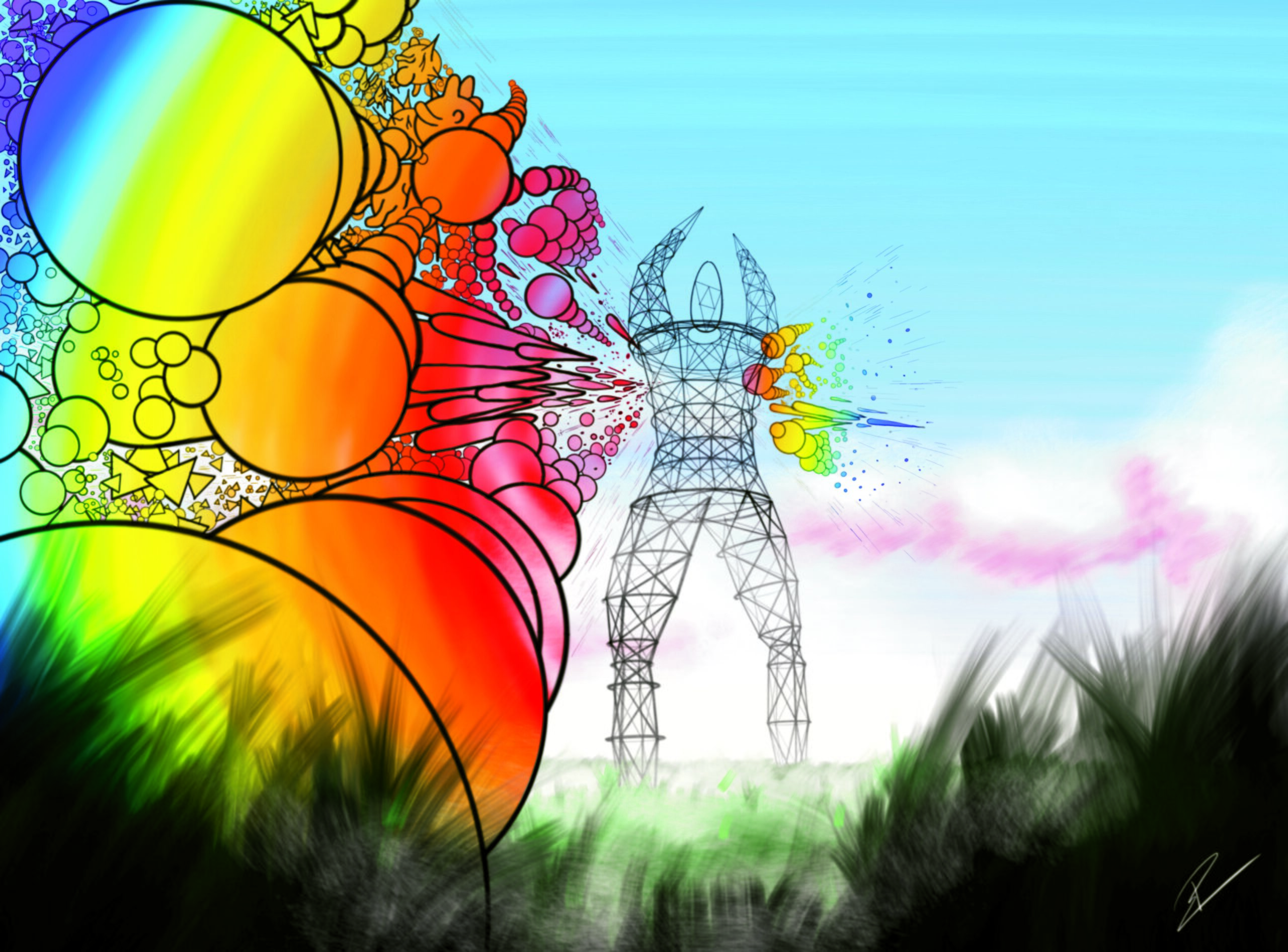Review article of signal boosting nanostructures published on front cover of flagship journal.
Following a series of firsts for the RaNT team: our first attempt at communicating research through science art, and our first cover art submission to a scientific publisher; we got our very first acceptance to appear on the cover of a scientific journal! A full house at first try!
We’re very proud to announce that our latest review article is published today on the cover of Chemical Science, the flagship journal of the Royal Society of Chemistry. A big thank you to the editors for selecting the work.
See the full cover here.
 “The Signaller” – RaNT cover art from Chemical Science Vol. 11, Issue 33. Image credit: Ryan Edginton
“The Signaller” – RaNT cover art from Chemical Science Vol. 11, Issue 33. Image credit: Ryan Edginton
Authored by Dr. Priyanka Dey and Prof. Nick Stone from the RaNT team, in collaboration with Prof. Idriss Blakey from the Australian Institute for Bioengineering and Nanotechnology at the University of Queensland.
The paper reviews a range of gold nanostructures used to make biological targets (disease sites) more visible than the surrounding (healthy) tissue in clinical diagnostic images. The current state-of-the-art in several optical imaging techniques is covered in the article, including the surface enhanced spatially offset Raman scattering (SESORS) approach central to the RaNT technology.
The artwork accompanying the review paper was created by Dr. Ryan Edginton and is titled “The Signaller”. It features an antenna mast in the form of a human body – standing strong, arms raised skyward – with a cacophony of rainbow-coloured nanoparticle shapes creating the signal wave that broadcasts out across an open landscape.
The piece communicates how gold nanoparticles are helping to make non-invasive optical diagnostics a reality for future clinical practice. It specifically reflects the application of RaNT’s surface enhanced spatially offset Raman spectroscopy (SESORS)-based technology.
The human body is the aerial from which the diagnostic signal radiates. A signal that is made strong enough to be detected non-invasively from outside of the body (without the aid of surgical probes), by inclusion of nanoparticles at potential disease sites deep within.
To symbolise this signal boosting power, the information waves being transmitted out of the body, dominating the surrounding landscape, are shown composed of all the nanoparticle shapes discussed in the paper (tentacles, rods, pyramids, prisms, stars, spheres, shells, rasberries, branches & chains).
In reality, the signals are a scattered spectrum of invisible (near infra-red; NIR) light wavelengths – represented by the rainbow colours – containing information on the type, location and size of potential tumour targets. This is all encoded in the relative intensities of specific wavelengths within the scattered light.
To find out more, read a full summary of the paper here.






